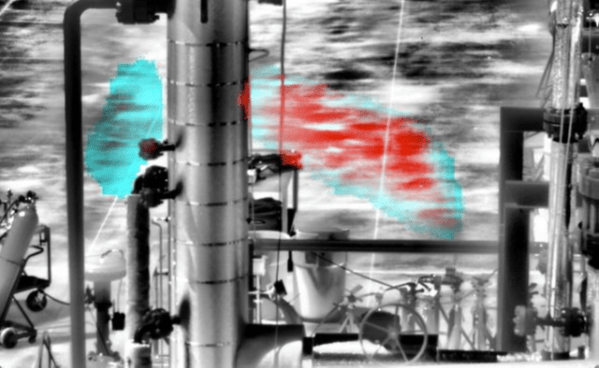SwRI develops technology to significantly reduce greenhouse gas emissions

The Southwest Research Institute (SwRI) announced Thursday that it has developed a novel methane leak detection technology that can significantly reduce greenhouse gas emissions in the energy sector.
With the support of the National Energy Technology Laboratory (NETL) at the U.S. Department of Energy, SwRI conducted a five-year study of how compressor stations contribute to fugitive methane emissions. SwRI’s Smart Methane Emission Detection System (SLED/M) was developed to reliably, accurately, and autonomously detect and estimate methane leaks in natural gas infrastructure in real-time using midrange infrared (MWIR) optical gas imaging (OGI) cameras.
“This system facilitates the early detection of emissions before they become a larger problem,” said Joe Renk, senior federal project manager overseeing the work.
SLED/M was able to detect methane as low as three standard cubic feet per hour, with a precision of 96.6 percent, the study showed. Additionally, the system can estimate methane flow extremely accurately, SwRI said, using machine learning techniques.
Using only MWIR OGI camera and some basic weather information, the system reduces the need for additional instrumentation and equipment. The system will allow compressor station operators to identify failing equipment in aging infrastructure and replace faulty components expediently, which will result in significant emissions reductions.
“The SwRI team has successfully achieved the goals they set out to accomplish in this project,” Renk said. “From the initial SLED/M development to adapting the technology for use in an unmanned aerial system, to adding automation and quantification abilities to the technology, the team provided a solution that was scalable, cost-effective, and non-intrusive.”
SwRI said its next steps include exploring additional capabilities and improving quantification accuracy, as well as looking into commercialization pathways.
